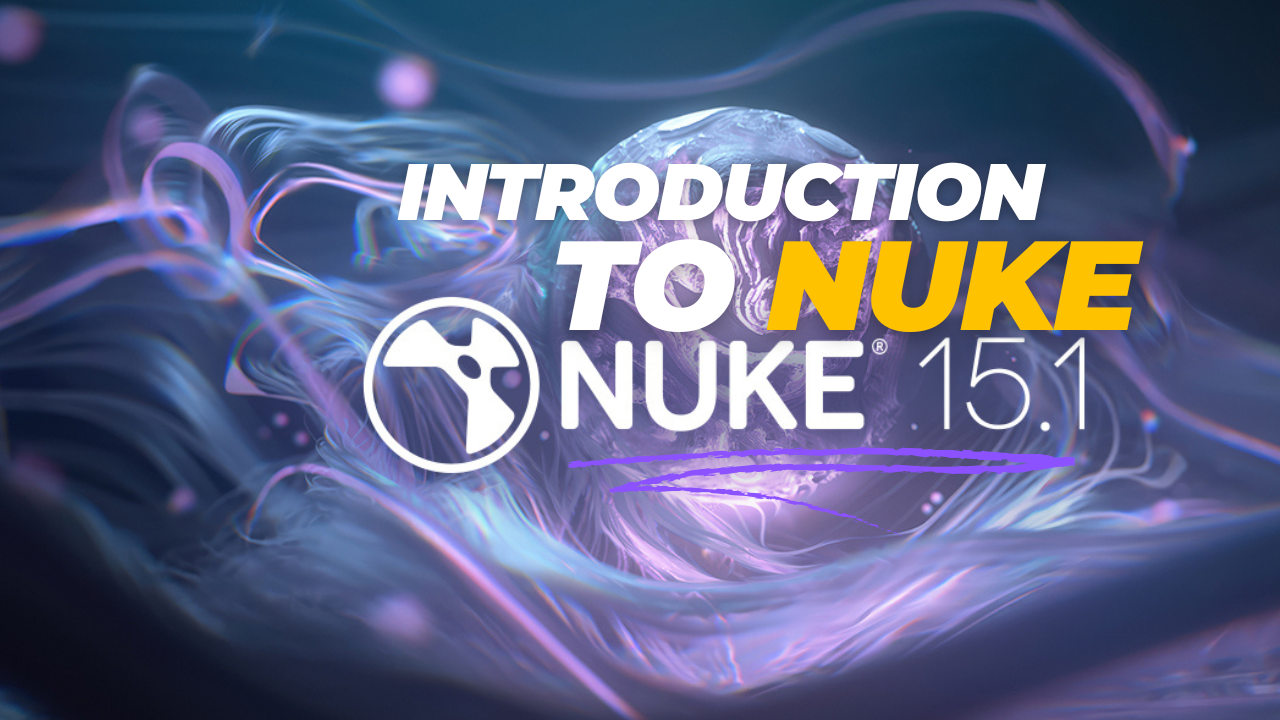
Created by - Anil Chauhan
Introduction to Nuke
Nuke is a leading visual effects (VFX) and compositing software developed by Foundry. It is widely used in the film, television, and advertising industries to create high-quality visual effects and seamless compositing. Nuke’s node-based workflow, 3D environment, and advanced tools make it an industry standard for integrating CGI, live-action footage, and effects. Offering features like keying, roto-paint, deep compositing, and multi-channel support, Nuke provides professionals with the flexibility and power to handle complex VFX tasks. It is highly regarded for its ability to produce cinematic-quality results and is trusted by major studios globally.Understanding workflow of NukeThe workflow of Nuke revolves around its node-based compositing system, which allows for flexibility, organization, and efficient management of complex visual effects tasks. Here’s a step-by-step guide to understanding Nuke’s workflow:1. Importing Footage Input Nodes: Start by importing your assets (e.g., video footage, CGI renders, images). Use the Read Node to bring files into the project. Nuke supports multiple formats like EXR(Extended Dynamic Range), DPX(Digital Picture Exchange), MOV(Metal Oxide Varistor), and image sequences. 2. Node-Based Compositing What Are Nodes? Nodes are the building blocks of Nuke’s workflow. Each node performs a specific function (e.g., color correction, transformations). Nodes are connected to define the flow of operations. Node Graph: The Node Graph visually represents your project. It shows the connections and relationships between operations, making it easy to troubleshoot and adjust. 3. Basic Operations Transformations: Use transform nodes (like Scale, Rotate, Translate) to position and manipulate elements. Keying and Masking: Extract elements from green screens using tools like Keylight or Primatte. Rotoscoping tools allow manual masking for isolating elements. Color Correction: Adjust brightness, contrast, saturation, and grading using nodes like Grade, ColorCorrect, and HueShift. 4. Integration with CGI 3D Environment: Nuke supports a robust 3D workspace, where you can: Import 3D models or cameras from 3D software (e.g., Maya, Blender). Set up projections and lighting for better integration of CGI and live-action footage. Tracking and Stabilization: Use 2D Tracker, Planar Tracker, or 3D Camera Tracker to match the motion of elements in the footage. Deep Compositing: Combine elements with depth information to achieve realistic layering without manual z-depth work. 5. Refinements RotoPaint: Use the paint tool to remove unwanted elements or add details. Grain and Defocus: Add or match film grain and defocus effects to blend CGI with live-action seamlessly. Time Effects: Modify the timing of sequences using nodes like TimeWarp and FrameHold. 6. Reviewing and Iteration Proxy Mode: Work on lower-resolution versions of the footage for faster performance. Viewer Panel: Preview the results in real time using the Viewer. Collaborative Review: In Nuke Studio or Hiero, timelines can be managed, reviewed, and edited collaboratively. 7. Rendering Write Node: Use the Write Node to export your final output. Supports multiple formats and resolutions for delivery. 8. Integration with Pipelines Nuke is often part of a larger VFX pipeline, working seamlessly with software like Maya, Houdini, Blender, and After Effects. It supports scripts (Python and TCL) for automation and custom tools, enhancing productivity. Example Workflow in Action: Import live-action footage using a Read Node. Use a Keying Node to remove the green screen. Match CGI elements in the 3D space with the Camera Tracker. Add color corrections and visual effects using Grade and Blur Nodes. Export the final composition using a Write Node. This modular approach makes Nuke highly efficient and adaptable for both simple tasks and complex VFX projects. Would you like a deeper dive into any specific aspect of this workflow?https://www.youtube.com/watch?v=85CnpiplLgY&list=PLIi3DnFfUZQHVIhKAgs2xhODTDxjCeko_https://www.youtube.com/watch?v=85CnpiplLgY&list=PLIi3DnFfUZQHgabWS1vwQk-Kh-ELMeFYlhttps://www.youtube.com/watch?v=85CnpiplLgY&list=PLIi3DnFfUZQHVIhKAgs2xhODTDxjCeko_into Adobe After EffectsNuke WindowThe Nuke interface is designed to streamline the VFX and compositing workflow. It consists of multiple panels, each serving a specific purpose, allowing artists to efficiently interact with their projects. Here's a breakdown of the primary components of Nuke's main window:1. Viewer Panel Displays the output of your composition. Key features: Play Controls: Play, pause, and scrub through the timeline. Region of Interest (ROI): Focus on specific areas for faster previews. Color Channels: Toggle between RGB, alpha, depth, or custom channels. Overlays: View guides, grids, or trackers directly in the Viewer. 2. Node Graph The central workspace where you manage and connect nodes. Displays the flow of operations (e.g., importing footage, applying effects, rendering). Features: Node Connections: Shows how nodes are linked to process data. Organizational Tools: Group nodes, create backdrops, and label for clarity. 3. Properties Panel Displays editable parameters for the currently selected node. Allows fine-tuning of individual node settings (e.g., adjusting blur intensity, color values, or transformations). 4. Toolbar Located at the top of the interface. Provides quick access to commonly used tools and nodes, such as: Transform Nodes (Translate, Scale, Rotate) Keying Nodes (Keylight, Primatte) Color Correction Nodes (Grade, HueShift) 3D Tools (Cameras, Lights, Geometry) 5. Timeline Displays the project’s frame range and playback controls. Useful for scrubbing through your composition, setting in/out points, and managing animation keyframes. 6. Script Editor Found at the bottom of the interface. Used for scripting in Python or TCL to automate tasks and customize workflows. 7. 3D Viewer (Optional) Switch to the 3D Viewer to work within Nuke's 3D compositing environment. Used for navigating 3D cameras, geometry, and lights. 8. Panels Menu Access additional panels such as: Dope Sheet: Manage timing and keyframes visually. Curve Editor: Adjust animation curves for precise control. File Browser: Manage files and directories directly within Nuke. Customizing the Interface Panels can be docked, floated, or rearranged to suit your workflow. Save custom layouts for different tasks, like keying, rotoscoping, or 3D compositing. Would you like more details about a specific panel or advice on customizing your Nuke workspace?Nuke ToolbarThe Toolbar in Nuke provides quick access to commonly used nodes, tools, and functions for compositing and visual effects. It is located on the left side of the interface by default and can be customized to suit specific workflows. Here's an overview of its key sections:1. Common NodesThe toolbar includes shortcuts for frequently used nodes in compositing. Some of the primary categories are:Transform Nodes Transform: Adjust position, rotation, scale, and pivot. Reformat: Change the resolution or aspect ratio of an image. Crop: Define or limit the working area of an image. Merge Nodes Merge: Combine two or more images using operations like Over, Multiply, or Screen. Keymix: Mix two images based on an alpha or mask input. Keying Nodes Keylight: Remove green/blue screen backgrounds. Primatte: Advanced keying tool for refining mattes. IBK (Image-Based Keyer): Specialized tool for creating clean plates and keying. Color Correction Nodes Grade: Adjust brightness, contrast, gamma, and gain. ColorCorrect: Modify specific tonal ranges. HueCorrect: Shift or isolate colors. Saturation: Change color intensity. 2. Drawing and Masking Tools Roto: Create custom shapes for masking or animation. RotoPaint: Draw, paint, or clone directly on your footage. Bezier/Ellipse/Rectangle: Add basic geometric shapes for masks. 3. 3D Tools Camera: Add a virtual 3D camera. Light: Introduce lighting for 3D scenes. Geometry: Import or create 3D shapes (e.g., Sphere, Cube, Card). ScanlineRender: Convert 3D scenes into 2D renderable images. 4. Filter Nodes Blur: Soften details in an image. Sharpen: Enhance edges and textures. Defocus: Simulate lens defocus or depth of field. MotionBlur: Add motion blur based on movement or vectors. 5. Time Nodes TimeOffset: Adjust timing by shifting frames forward or backward. FrameHold: Freeze a specific frame. TimeWarp: Change the speed of footage with custom frame mapping. 6. Utilities Shuffle: Reassign or manipulate image channels. Expression: Create custom mathematical expressions to modify data. Switch: Alternate between multiple inputs dynamically. 7. Gizmos and Custom Nodes Gizmos are custom tools or scripts created by users or downloaded from external libraries. These often extend the functionality of Nuke and can be added to the toolbar for convenience. Customizing the Toolbar Adding Favorites: Drag commonly used nodes into a Favorites section for quick access. Scripts and Plug-ins: Integrate custom scripts or plug-ins for additional tools. Rearranging: Rearrange or add/remove categories as per your workflow preferences. The toolbar is an essential part of Nuke’s interface, allowing artists to efficiently access and implement tools while focusing on creativity. Would you like a deeper dive into any specific category of tools or guidance on customizing the toolbar?Nuke Menu BarThe Menu Bar in Nuke is located at the top of the interface and provides access to a wide range of commands, tools, and settings. It is organized into menus that cover different aspects of Nuke's functionality. Here's an overview of the key menus and their purposes:1. File New Script: Start a new project. Open Script: Load an existing Nuke script (.nk). Save/Save As: Save the current project. Render All Writes: Render all active Write nodes in the script. Export Project Settings: Save project-specific configurations. Script History: Access recently opened scripts. 2. Edit Undo/Redo: Revert or reapply recent actions. Cut/Copy/Paste: Standard clipboard operations for nodes. Preferences: Customize Nuke’s settings, such as cache, rendering, or interface behavior. Node Defaults: Set default properties for newly created nodes. 3. View Viewer Controls: Manage how the Viewer displays the composition (e.g., channel selection, zoom, overlays). Panels: Toggle panels like Node Graph, Properties, Dope Sheet, and Curve Editor. Layouts: Save and switch between custom interface layouts. 4. Render Render Current Frame: Render the frame currently displayed in the Viewer. Render All Frames: Process the entire timeline for selected Write nodes. Flipbook: Generate a temporary playback preview for quick review. Background Renders: Manage rendering tasks running in the background. 5. Script Script Editor: Open the Python or TCL scripting console for automation and custom tools. Run Script: Execute a pre-written script file. Reload Plug-ins: Refresh installed plug-ins or scripts. 6. Cache Clear Cache: Remove cached data to free up memory. Cache Settings: Configure caching for nodes and viewers. Playback Cache: Manage settings for real-time playback optimization. 7. Nodes Provides access to all available node categories: Image: Nodes like Read, Write, and Constant. Color: Color correction and grading tools. Filter: Blur, Sharpen, Defocus, and other image filters. 3D: Nodes for working with 3D cameras, geometry, and lights. Keyer: Keying tools like Keylight, Primatte, and IBK. 8. 3D Specific to Nuke’s 3D compositing environment: Create 3D Geometry: Add basic 3D shapes (e.g., cards, spheres, cubes). Import FBX: Load 3D scenes or camera data. Render Camera: Define camera projections and settings. Reset Camera: Revert camera positions or settings. 9. Window Floating Panels: Open new or existing panels as floating windows. Workspace Management: Save, load, or reset workspace layouts. Monitor Outputs: Manage display outputs for external monitoring. 10. Help Nuke Help: Access the official documentation. Release Notes: View updates and changes in the current Nuke version. Tutorials: Access training resources from Foundry. About Nuke: View license and version information. CustomizationThe Menu Bar in Nuke is customizable. You can add new menus or commands using scripting, making it adaptable to specific workflows. Would you like further details about any specific menu or guidance on customization?
More detailsPublished - Sat, 18 Jan 2025
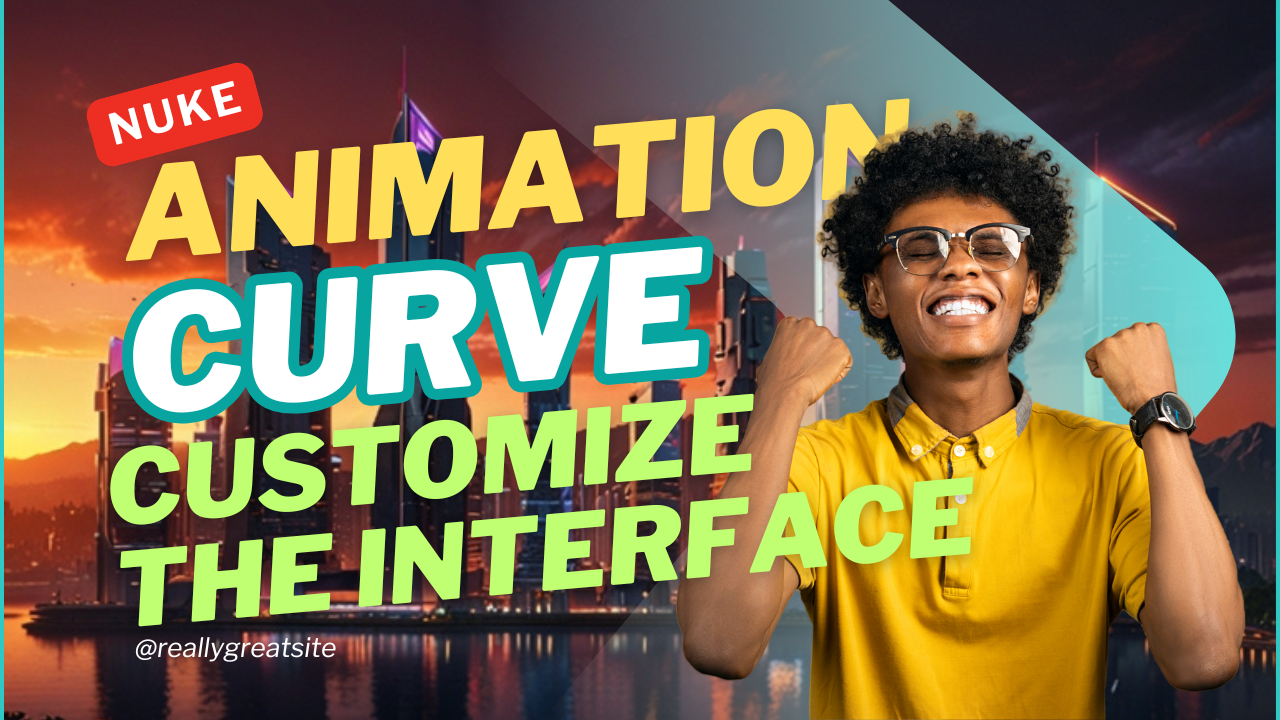
Created by - Anil Chauhan
animation |Curve Editor | Customize the Interface
"nuke" animationCreating a "nuke" animation typically involves simulating an explosion with a nuclear-like aesthetic. The parameters you need depend on the software you're using (e.g., Blender, Maya, After Effects, Houdini). Below is a general breakdown of key parameters to consider:1. General Animation Settings Timeline/Duration: Set the total length of your animation (e.g., 10–20 seconds for a full explosion). Frame Rate: Standard rates are 24, 30, or 60 FPS for smoother animations. 2. Simulation Parametersa. Explosion Shape Blast Radius: Controls the size of the explosion. Blast Shape: Adjust to create a mushroom cloud with a distinct stalk and cap. Falloff: Determines how the intensity decreases with distance. b. Smoke & Fire Density: Controls the thickness of the smoke. Turbulence: Adds chaotic movement to smoke and fire. Velocity: Determines the speed of expansion. Heat/Temperature: Affects fire intensity and dissipation. Color Mapping: Controls gradients (e.g., bright white to orange to black). c. Particles/Debris Emission Rate: Number of particles per frame. Size Variation: Randomize particle sizes for realism. Gravity/Drag: Affects how particles fall and settle. Lifetime: How long particles are visible before fading out. 3. Lighting Key Light: Represents the explosion’s initial flash. Area Light: Illuminates the surrounding environment. Falloff: How light intensity decreases over distance. Color: Typically starts as bright white, transitions to orange/yellow. 4. Shader/Material Parameters Emission Strength: Intensity of the glowing areas (fireball, sparks). Transparency: Use alpha maps for smoke fading. Noise/Detail: Add procedural textures to enhance realism. Reflection/Refraction: Simulate light interactions with nearby objects. 5. Camera Settings Field of View (FOV): Adjust for cinematic framing. Shake: Simulate a shockwave effect. Depth of Field (DOF): Blur distant or close elements for focus. 6. Post-Processing Glow/Bloom: Adds a radiant effect to the explosion. Lens Flare: Simulate the light burst. Motion Blur: Makes fast-moving elements smoother. Color Grading: Adjust contrast, saturation, and hues. Software-Specific FeaturesBlender Use the Mantaflow simulation engine for smoke/fire. Enable Cycles Renderer for realistic lighting. Use Volume Shaders for detailed smoke. Houdini Use Pyro FX for advanced fluid dynamics. Fine-tune the density, temperature, and fuel attributes. After Effects Use Trapcode Particular or Element 3D for particles. Add Optical Flares for light effects. What software are you using? I can provide more tailored guidance if needed!Curve EditorThe Curve Editor in Nuke is a powerful tool for animating and fine-tuning the timing and motion of keyframes. It allows you to control how parameters change over time, providing a detailed and precise interface for creating smooth and dynamic animations.Accessing the Curve Editor Open your Node Graph. Select the node whose parameters you want to animate. Open the Curve Editor from the menu: View > Curve Editor or press Shift + E (default shortcut). Key Features of the Curve Editor1. Parameter List Located on the left, it shows all animatable properties of the selected node (e.g., Translate, Scale, Opacity). Click the checkboxes next to parameters to view/edit their curves in the timeline. 2. Timeline Horizontal axis: Represents time (frames or seconds). Vertical axis: Represents the parameter's value. Scrub through the timeline to see changes in real-time. 3. Keyframes Represented as dots along the curve. You can: Add Keyframes: Alt/Option + Click on the curve. Delete Keyframes: Select and press Delete. Move Keyframes: Drag to adjust timing or value. 4. Curve Types Linear: Creates straight transitions between keyframes. Bezier: Allows smooth, adjustable curves for ease-in/out. Constant: Maintains a static value until the next keyframe. 5. Spline Handles Appear when using Bezier curves. Drag handles to adjust the curve's shape and smoothness. Common Use Cases Animating Transformations: Use the Transform node's curves (Translate X/Y, Rotate, Scale) to animate movement or zoom effects. Opacity Fades: Animate the Opacity parameter of a node for fade-ins/outs. Color Grading Over Time: Adjust parameters like Gain or Gamma to change brightness or contrast dynamically. Advanced Tools Expression Links: Link parameters using expressions for dynamic, procedural animations. Example: Link a rotation to time for a spinning effect (frame * 10). Time Warping: Use the TimeWarp node to manipulate the curve and adjust playback speed. Predefined Easing: Apply easing options to control the acceleration and deceleration of animations. Tips for Using the Curve Editor Zoom & Pan: Use the mouse wheel to zoom and Alt + Drag to pan. Fit to View: Right-click in the curve editor and choose Fit to View to display all keyframes. Snap to Frames: Enable snapping to ensure keyframes align with whole frames. Scripting: Use Python or TCL scripts to programmatically set keyframes. Let me know if you’d like guidance on a specific animation setup in the Curve Editor!nuke customizing the interfaceCustomizing the interface in Nuke allows you to tailor the workspace to your workflow. Nuke offers flexible options for rearranging panels, creating custom layouts, and modifying settings to suit your preferences.Ways to Customize the Interface1. Rearranging Panels Docking Panels: Drag panels (e.g., Viewer, Node Graph, Properties) to different areas of the interface. You'll see highlights showing where the panel will dock. Floating Panels: Undock panels by dragging them out of the main window to create standalone, floating panels. Combining Panels: Drag one panel onto another to combine them as tabs. 2. Custom Layouts Saving Layouts: Arrange the interface as desired. Go to Workspace > Save Layout. Name the layout and save it for future use. Loading Layouts: Access your saved layouts from Workspace > Custom Layouts. 3. Customizing Menus and Toolbars Adding Shortcuts: Open the Preferences panel (Edit > Preferences). Go to the Panels > Custom Shortcuts section. Assign custom shortcuts to frequently used commands. Custom Toolbar: Right-click in the toolbar area and select Manage Toolbars. Add, remove, or rearrange tools to streamline your workflow. 4. Python Scripts for Customization Use Python scripts to add custom functionality to menus or panels. Creating a Custom Menu: Add a .py file to the .nuke directory. Example: import nuke def my_custom_function(): nuke.message("Hello, Nuke!") nuke.menu('Nuke').addCommand('Custom/My Function', my_custom_function) This adds a menu item under Custom > My Function that triggers the script. 5. Custom Node Graph Settings Node Appearance: Change the appearance of nodes in the Node Graph via Preferences > Node Graph. Customize node shapes, colors, and sizes. Backdrop Nodes: Organize groups of nodes with backdrop nodes for better clarity. Add a custom label, color, or size to backdrops. 6. Adjusting Viewer Settings Customize the Viewer panel to suit your needs: Viewer Color Settings: Adjust LUTs (Look-Up Tables) for color grading. Viewer Controls: Rearrange overlays like grid lines or safe areas. 7. Setting Default Preferences Default Nodes: Set default values for nodes by editing the init.py file in the .nuke directory. Example: To set default values for a Blur node: nuke.knobDefault('Blur.size', '10') Startup Layout: Save your preferred layout and set it as the default when Nuke starts (Workspace > Set as Default). Restoring DefaultsIf the customization becomes overwhelming or you want to reset everything: Go to Workspace > Reset to Default. Delete the .nuke directory (back it up first if needed) to remove all customizations. Let me know if you’d like help with specific customizations or scripting!
More detailsPublished - Tue, 21 Jan 2025
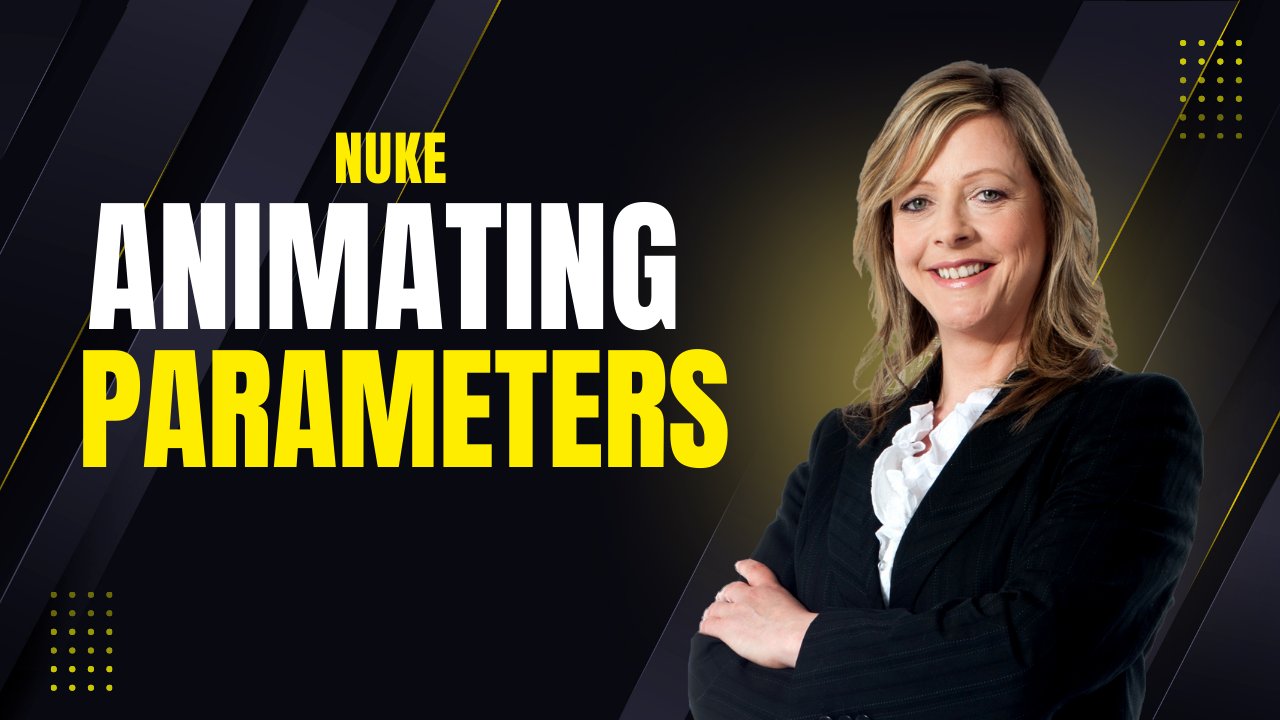
Created by - Anil Chauhan
Nuke, animating parameters
In Nuke, animating parameters is a key aspect of creating dynamic visual effects. Here’s how you can animate parameters in Nuke:1. Setting Keyframes Select a Node: Click on the node you want to animate (e.g., Transform, Blur, etc.). Find the Parameter: Locate the parameter you want to animate (e.g., Translate, Scale, Rotate). Set a Keyframe: Right-click the parameter and choose "Set Key" OR Click the small diamond icon next to the parameter. Move to Another Frame: Change the frame number in the timeline. Modify the Value: Adjust the parameter; Nuke automatically creates a new keyframe. 2. Using the Curve Editor Open the Curve Editor (Shortcut: Shift + E). Select the animated parameter from the left panel. Adjust the Bezier handles to smooth or ease the animation. Right-click on keyframes for interpolation options like linear, constant, or cubic. 3. Using the Dope Sheet Open the Dope Sheet (Shortcut: Alt + D). This gives a visual timeline of keyframes. Drag keyframes to adjust timing. Right-click keyframes for options like copy, paste, delete. 4. Expressions for Automation Right-click the parameter and choose "Edit Expression". Use expressions like: frame → Moves based on the frame number. sin(frame) → Creates a wave-like motion. random(frame) → Generates random values. frame/10 → Slows down movement. 5. Linking Parameters (Expressions & Linking) Right-click a parameter → "Add Expression". Use parent.node.parameter to link values (e.g., Blur1.size = Transform1.scale * 10). 6. Using Motion Paths For movement-based animation (like object motion), use the Transform node. Adjust Translate X/Y over time to define a path. 7. Scripting for Advanced Animation Use Python or TCL scripts to automate animations. Example in Python: nuke.toNode("Transform1")["translate"].setAnimated() nuke.toNode("Transform1")["translate"].setValueAt(50, 1) # Frame 1 nuke.toNode("Transform1")["translate"].setValueAt(200, 50) # Frame 50 By mastering these animation techniques, you can create smooth and dynamic effects inside Nuke. Need help with a specific animation? ????
More detailsPublished - 1 Day Ago
Search
Popular categories
Adobe After Effects 2025
28Unreal Engine
14zbrush
10Maya Animation
8zbrush tutorial jewelry
7Maya 2025
5Latest blogs

Advanced Editing Techniques
47 Minutes Ago
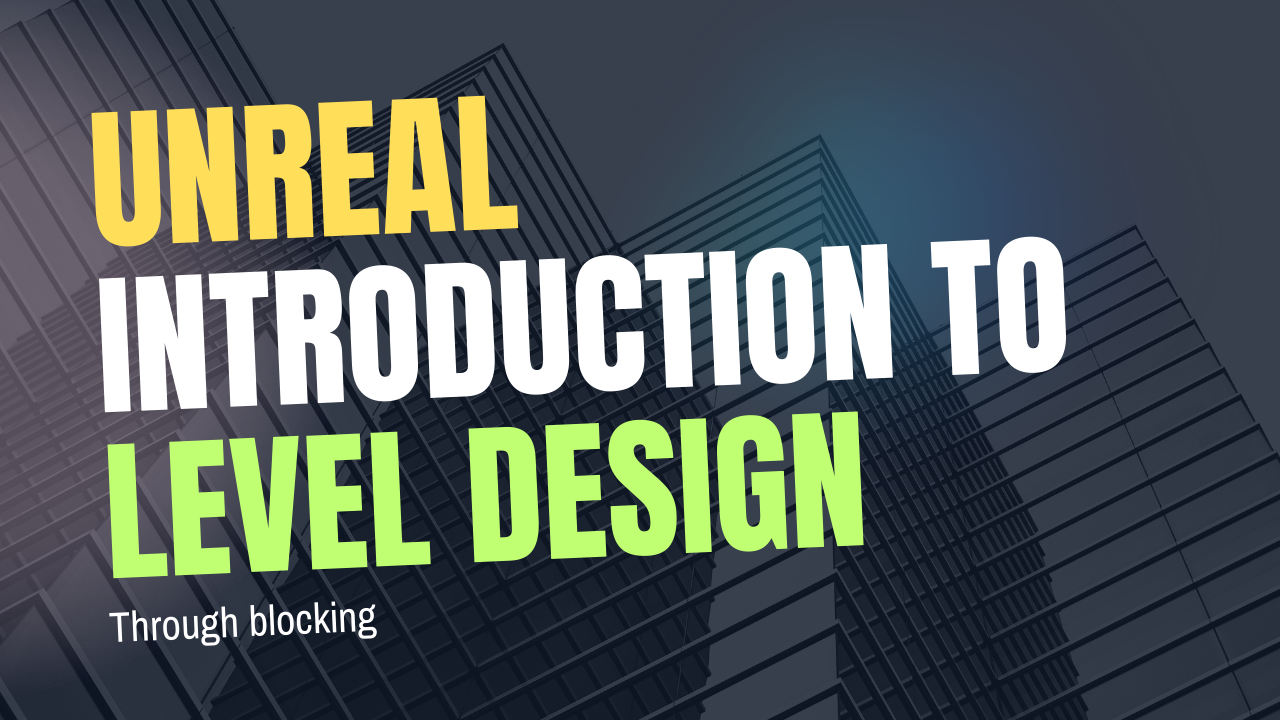
Introduction to Level Design Through Blocking in Unreal Engine
1 Day Ago
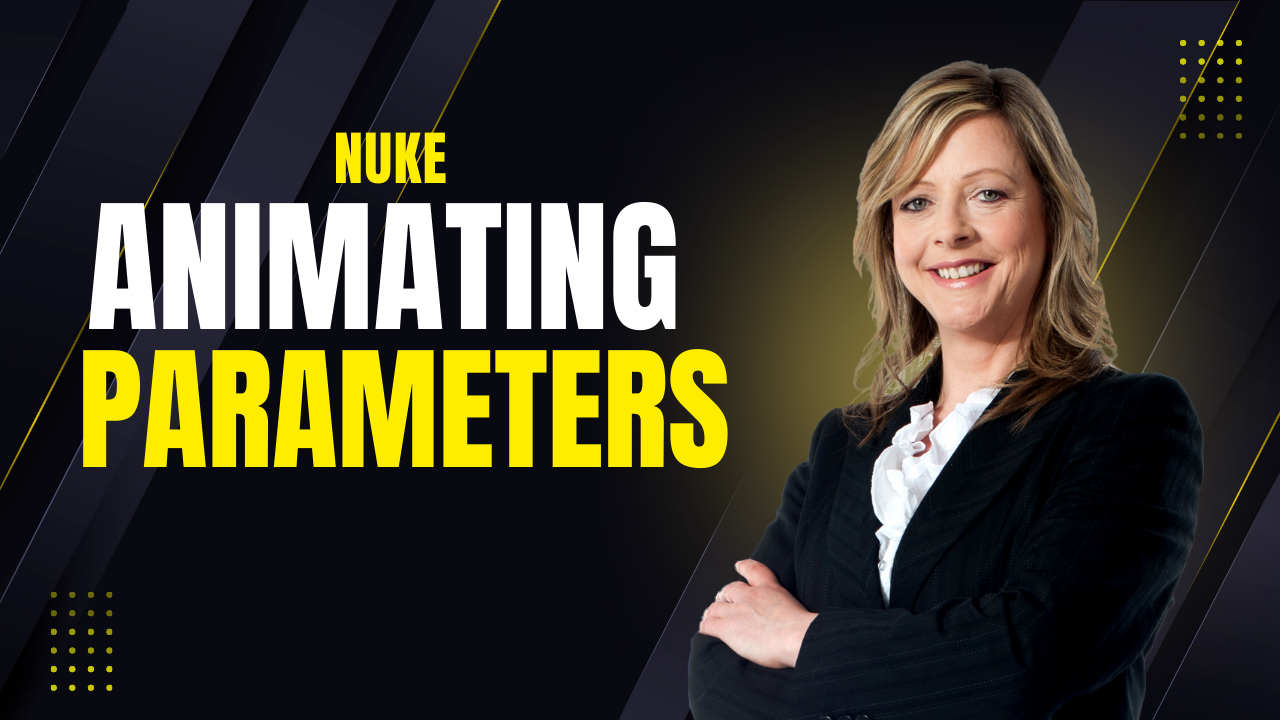
Nuke, animating parameters
1 Day Ago
Write a public review